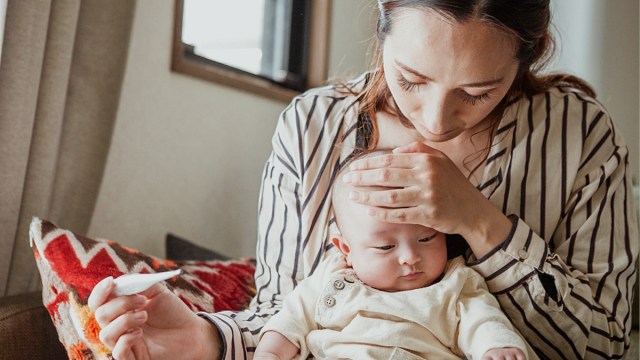It breaks a parent’s heart to see their baby suffer, whether they’re staring up at you with those sad feverish eyes or dealing with the aftermath of a few vaccines. Unfortunately, this has opened the doors for drug companies to take advantage, charging significantly more for “infant” versions of their meds than children’s.
And this is a message that TikTok’s @beachgem10, a pediatric ER doctor in Florida, shares regularly for all the parents out there paying more for less. The truth? There is absolutely no difference between infant and children’s Tylenol—except the price. She explained the little-known fact in a post, captioned: “In the US, infant and children’s acetaminophen is the EXACT same, but the infant is way more expensive!”
@beachgem10 In the US, infant and children’s acetaminophen is the EXACT same, but the infant is way more expensive! #hack #kids #sick #baby #pediatrician
♬ original sound – Beachgem10
In her “drug store hacks from a pediatrician” video, she shows the baby version, priced at $8.79 with a dose of 160 mg per 5 ml, compared to the children’s version, priced at $6.49 for the exact same dose and more actual medicine! That’s the difference between $4.40 per ounce and $1.62 per ounce.
The mom of four goes on to show that the only other differences are the dosage guide on the back and the fact that the infant version comes with a syringe. As an aside, she notes that “A pharmacist may also be able to help with dosage and a syringe.”
Now, there’s actually a back story here, which NPR looked into in 2019. As it turns out, infant Tylenol used to be three times more concentrated than children’s to avoid giving babies too much liquid. Since it offered stronger medicine, it cost five times more per milliliter. But after a number of parents made dosing errors that caused their babies to become sick or in some tragic cases, die, Tylenol-maker Johnson & Johnson adjusted the concentration to be the same as the version for 2- to 11-year-olds.
In a statement to NPR, a rep for the drug company said the reason they never adjusted the price is because the bottles are sturdier and they include the syringe. But Inma Hernandez of the University of Pittsburgh School of Pharmacy, who spoke to NPR at the time, wasn’t convinced—and neither are we.
“The cup versus the syringe doesn’t really explain the price difference in my opinion,” Hernandez explained. “They’re really cheap because they’re just plastic. When we think of what’s expensive in a drug, it’s actually the active ingredient, and the preparation of that active ingredient in the formulation, not the plastic cup or the syringe.”
So there you have it. Another tip you might not know, courtesy of @beachgem10? The dosage on infant Tylenol boxes is generally lower than recommended, so you can talk to your pediatrician about more appropriate amounts.
Just remember that, as far as Infant and Children’s Tylenol goes, she’s only referring to Tylenol in the United States. If you live outside the US, be sure to check with your ped to make sure the children’s version works for your baby.
Bless this doctor mom and her willingness to help parents navigate the sometimes unfair world of children’s medications. And color us more than a bit annoyed!











